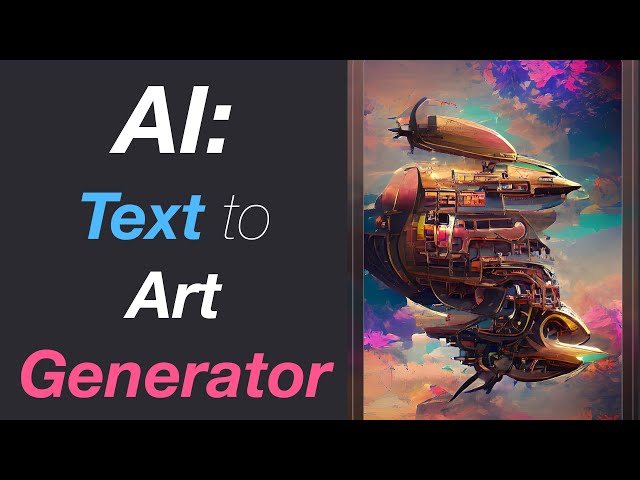AI Art Generators from Text
Text-to-art generators are AI tools designed to create images based on textual inputs. Users provide a descriptive text, and the AI interprets and visualizes the description in the form of artwork. This technology relies on advanced machine learning models and vast datasets to generate visually appealing and contextually accurate images.
Techno solution

Table of Contents
- Introduction
- What Are Text-to-Art Generators?
- How Text-to-Art Generators Work
- Popular Text-to-Art Generators
- Applications of Text-to-Art Generators
- Challenges and Ethical Considerations
- The Future of Text-to-Art Generators
- Conclusion
- References
Introduction
Text-to-art generators represent a groundbreaking development in artificial intelligence, allowing users to create visual artwork from textual descriptions. By translating written prompts into detailed images, these tools are opening new avenues for creativity and expression, transforming how we approach visual art.
What Are Text-to-Art Generators?
Text-to-art generators are AI tools designed to create images based on textual inputs. Users provide a descriptive text, and the AI interprets and visualizes the description in the form of artwork. This technology relies on advanced machine learning models and vast datasets to generate visually appealing and contextually accurate images.
How Text-to-Art Generators Work
Text-to-art generators typically use models known as Generative Adversarial Networks (GANs) or Variational Autoencoders (VAEs) in conjunction with language models. These systems are trained on large collections of images and associated text to learn how to match textual descriptions with visual elements. When a user inputs text, the AI processes it to produce an image that aligns with the description.
Key Techniques
- Text Embeddings: Converting text into numerical representations that the AI can understand.
- Conditional GANs: Generating images conditioned on the textual descriptions.
- Attention Mechanisms: Focusing on relevant parts of the text to improve image accuracy.
Popular Text-to-Art Generators
DALL-E
Developed by OpenAI, DALL-E is known for its ability to create highly detailed and imaginative images from textual descriptions. It can handle complex and abstract prompts with impressive creativity.
Stable Diffusion
An open-source model that allows for high-quality image generation from text inputs, Stable Diffusion offers flexibility and control over the creative process.
Craiyon (formerly DALL-E Mini)
Craiyon is a more accessible version of DALL-E, designed to generate images from text with a focus on user-friendliness and ease of use.
Artbreeder
Artbreeder uses a combination of text and image manipulation to create unique artworks. It allows users to blend existing images with text descriptions to produce new visual results.
Applications of Text-to-Art Generators
Creative Industries
In the creative industries, text-to-art generators are used for concept art, illustrations, and visual content creation. They provide artists and designers with tools to quickly visualize ideas and explore new creative directions.
Marketing and Advertising
For marketing and advertising, these tools help create customized visuals for campaigns, social media content, and promotional materials based on specific textual themes or brand messages.
Educational Tools
Text-to-art generators serve as educational tools by helping students and educators visualize concepts, stories, or historical events through creative imagery generated from text descriptions.
Challenges and Ethical Considerations
Accuracy and Interpretation
One challenge is ensuring that the generated images accurately reflect the intended textual descriptions. Misinterpretations or inaccuracies can lead to misleading or unintended visual outcomes.
Intellectual Property and Copyright
There are concerns about intellectual property, especially regarding images that closely resemble existing artworks or styles. The legal implications of using AI-generated art are still evolving.
Bias and Representation
AI models can exhibit biases based on their training data, which may lead to skewed or non-representative results. Ensuring diverse and unbiased outputs is a significant concern.
The Future of Text-to-Art Generators
The future of text-to-art generators involves enhancing their capabilities for even greater creativity and accuracy. Advances in AI technology may lead to more sophisticated models that better understand and interpret complex descriptions, offering richer and more diverse artistic possibilities.
Conclusion
Text-to-art generators are revolutionizing the intersection of language and visual art. By transforming textual descriptions into detailed images, these tools are expanding creative horizons and providing new opportunities for expression. As technology continues to advance, the potential applications and implications of text-to-art generators will only grow.